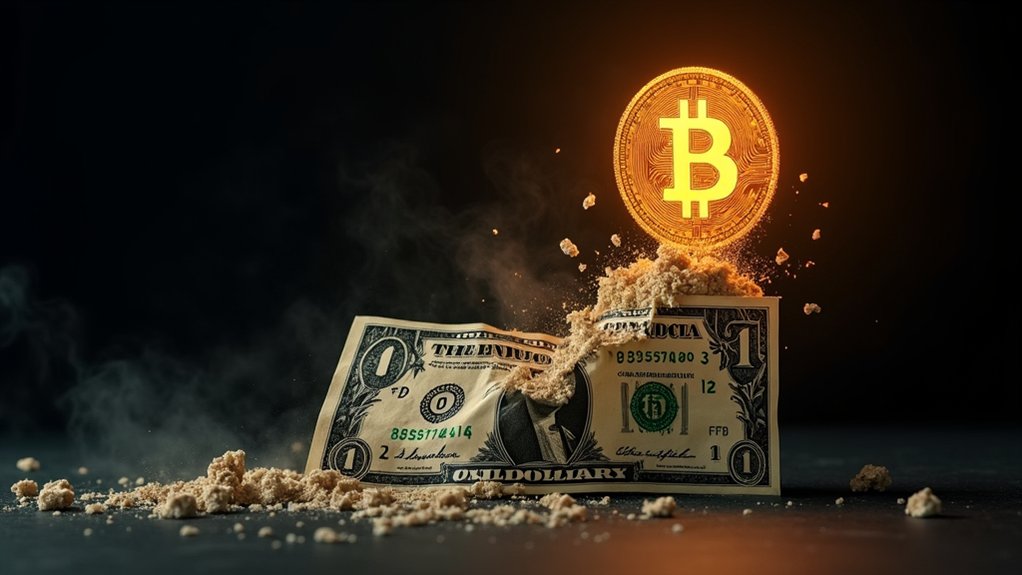While financial experts debate the future of the US dollar, storm clouds are gathering over the world’s reserve currency. Technical indicators paint a grim picture, with the DXY index showing a bearish inverse cup and handle pattern that suggests a potential plunge to 90. And here’s the kicker – a death cross has formed, which is about as welcome as a rattlesnake at a picnic.
The dollar’s troubles aren’t just technical mumbo-jumbo. Fund managers are running scared, with 61% expecting the greenback to keep sliding. That’s the most bearish sentiment since 2006 – you know, right before everything went sideways. Those massive federal deficits? They’re not helping. Neither are those eye-popping 145% tariffs on Chinese goods. Beijing isn’t exactly thrilled about that one. The latest data shows a concerning U.S. trade deficit at 4.2% of GDP as of September 2024. With three to four rate cuts expected in 2025, the dollar’s position looks increasingly precarious.
Fund managers are jumping ship, with bearish dollar sentiment at a 17-year high amid soaring deficits and China trade tensions.
Robert Kiyosaki and his cohort of dollar doomsayers are pointing to Bitcoin as the escape hatch. Sure, cryptocurrency has its critics, but its fixed supply and decentralized nature are looking mighty attractive to those watching the dollar’s gymnastics. Institutional investors are piling in, treating Bitcoin like digital gold – minus the storage hassles and security guard fees. The Fear and Greed Index suggests investors are increasingly bullish on cryptocurrencies as dollar concerns mount.
The implications of a dollar decline aren’t pretty. Think higher import prices, surging inflation, and interest rates that could make your mortgage look like a bargain. Global markets could get messier than a food fight in a kindergarten classroom. Yet somehow, the folks at Davos keep insisting the dollar’s dominance isn’t going anywhere soon. Talk about cognitive dissonance.
The reality is that the dollar still rules the roost in global finance. It’s the go-to currency for international trade, and US Treasuries remain the world’s favorite financial security blanket.
But with geopolitical tensions rising and nations increasingly looking for alternatives, that could change faster than you can say “monetary policy.” The smart money isn’t waiting to find out – they’re hedging their bets now, whether through Bitcoin or other alternatives. Welcome to the new normal, folks.





